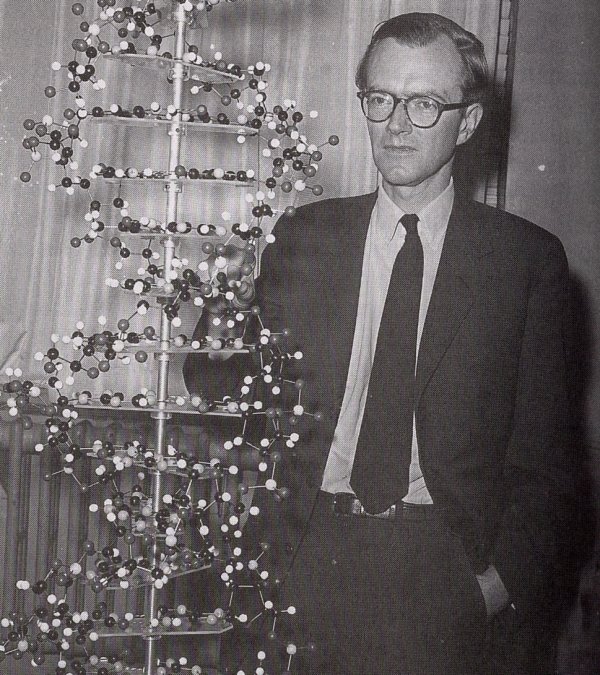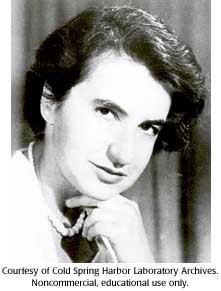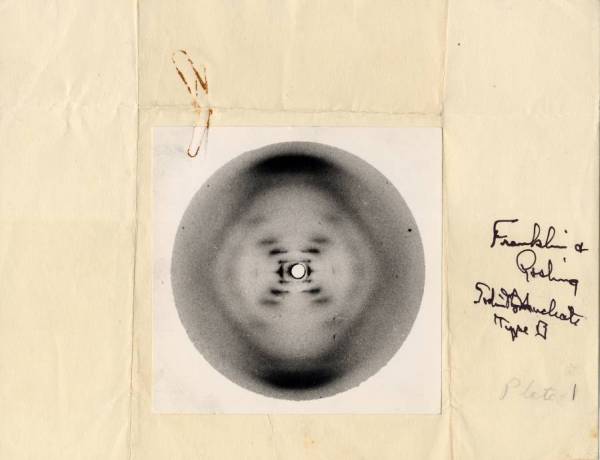Double Helix

Maurice Wilkins, 1960s, "Notable Twentieth-Century Scientists," Vol. 4 (S-Z)

Rosalind Franklin, Cold Spring Harbor Laboratory Archives

Photo 51, May 1952, Linus Pauling and The Race for DNA
There were two other scientists also interested in the topic of discovering the structure of DNA named Maurice Wilkins and Rosalind Franklin. Franklin used a technique called X-ray Crystallography to get an image of DNA known as Photo 51. The photo is a result of light going through a crystal and then a molecule, and in this case, DNA. It creates almost a shadow of the molecule. Watson and Crick used the photo that Franklin took to figure out what the molecule looked like and to make their own model. They realized that instead of a triple helix, as Pauling had guessed, a double helix seemed to fit the picture better. This double helix resembles a twisted ladder, and the rungs of the ladder hold the codes to your entire body. The “rungs” are made of four different nucleotides including, adenine, guanine, cytosine, and thymine. Depending on the way that these nucleotides are arranged, they code for 20 different amino acids. The amino acids then join together and create proteins.

Diagram of the Structure for Deoxyribose Nucleic Acid (DNA), 1953, American Decades Primary Sources (Vol. 6: 1950-1959. )
This image was in Watson and Crick's article they published with their discoveries.
Watson and Crick wrote an article about their findings in a British Journal called Nature titled “Molecular Structure of Nucleic Acids: A Structure for Deoxyribose Nucleic Acid." In this article they wrote, “We wish to put forward a radically different structure for the salt of deoxyribose nucleic acid. This structure has two helical chains each coiled round the same axis.” They proposed their idea, and many people read about it. Other scientists agreed with Watson and Crick, so the word spread very quickly of the discovery. Someone finally figured out "the secret to life." After Watson and Crick’s announcement the knowledge barrier involved with DNA and biology was broken. It opened many doors to other biologists to make even more discoveries, and then change lives.